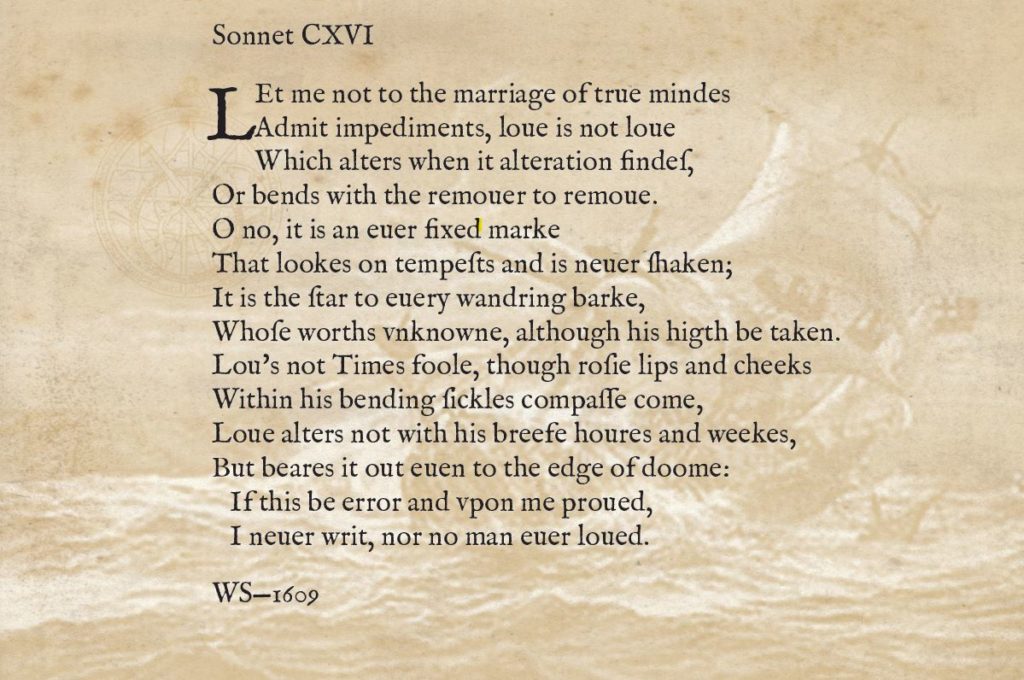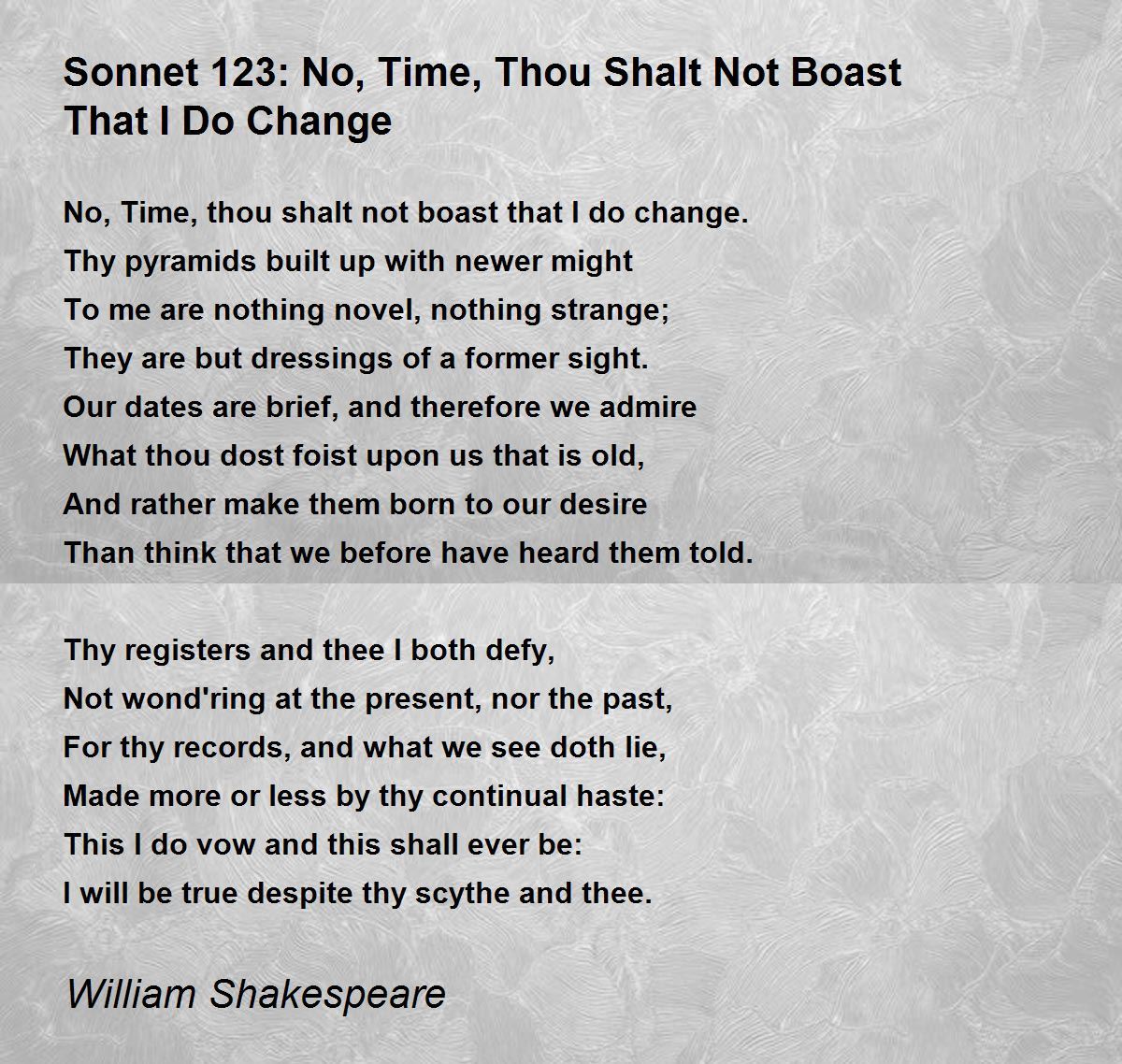


The main idea put forth in 116 is that ideal love is constant and permanent that it never alters, either with changing circumstances (first quatrain), difficulties (second quatrain) or with time (third quatrain). For its impersonal nature, it is not, however, unique among the 154 sonnets composed by Shakespeare: sonnets 94 and 129 also offer generalised observations on different aspects of love. As Helen Vendler 1 has pointed out, this renders the poem almost ‘impersonal’, in that it presents an explanation of true love rather than addressing a beloved. Shakespeare presents the reader with his conception of love in its most ideal form. The definition of love provided by Sonnet 116 makes this poem one of the most cited and anthologized in the entire poetic canon. If this be error and upon me proved, I never writ, nor no man ever loved. Love’s not Time’s fool, though rosy lips and cheeks Within his bending sickle’s compass come Love alters not with his brief hours and weeks, But bears it out even to the edge of doom. Love is not love Which alters when it alteration finds, Or bends with the remover to remove: O, no! it is an ever-fixed mark, That looks on tempests and is never shaken It is the star to every wandering bark, Whose worth’s unknown, although his height be taken. Let me not to the marriage of true minds Admit impediments.


 0 kommentar(er)
0 kommentar(er)
